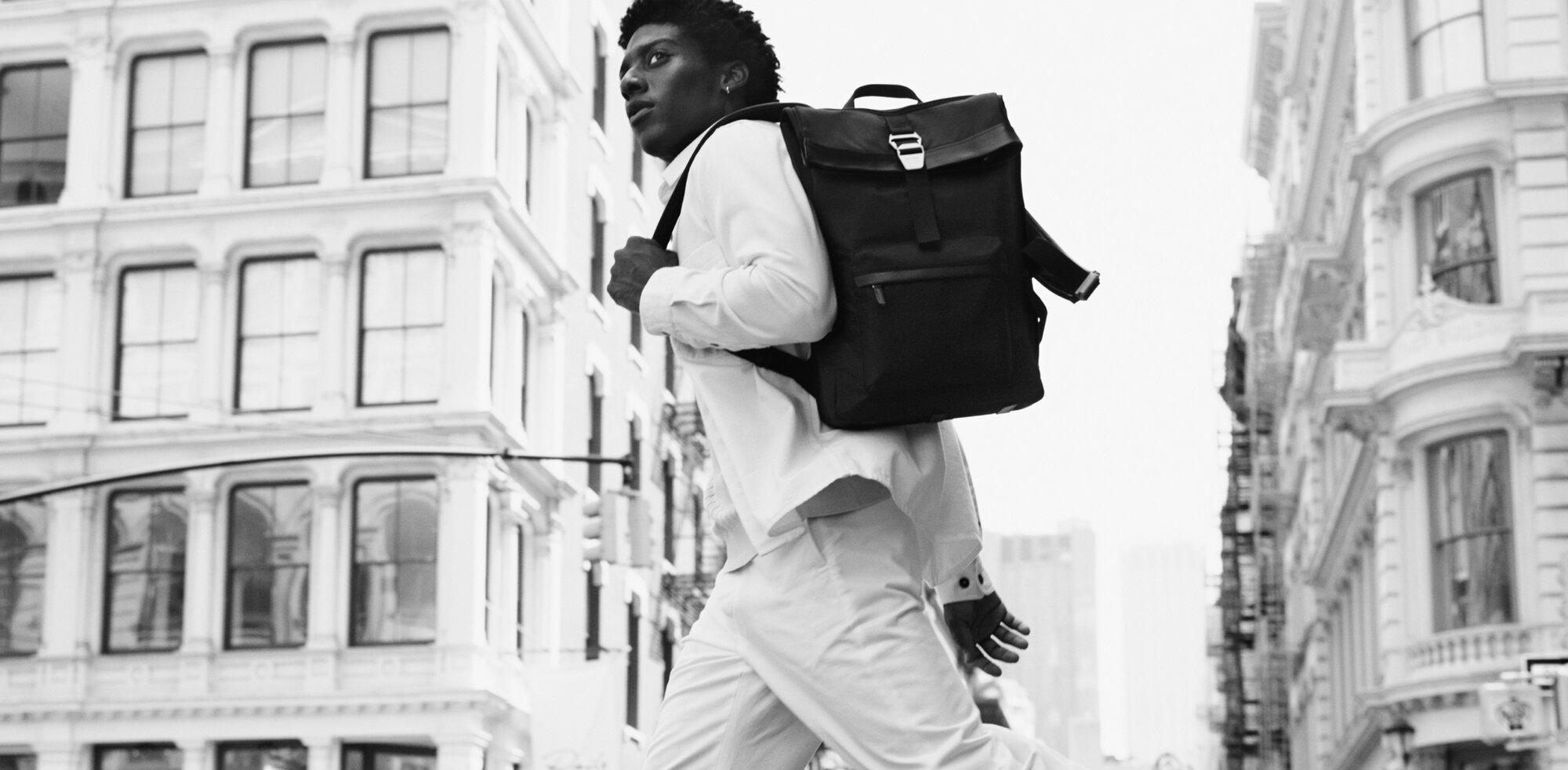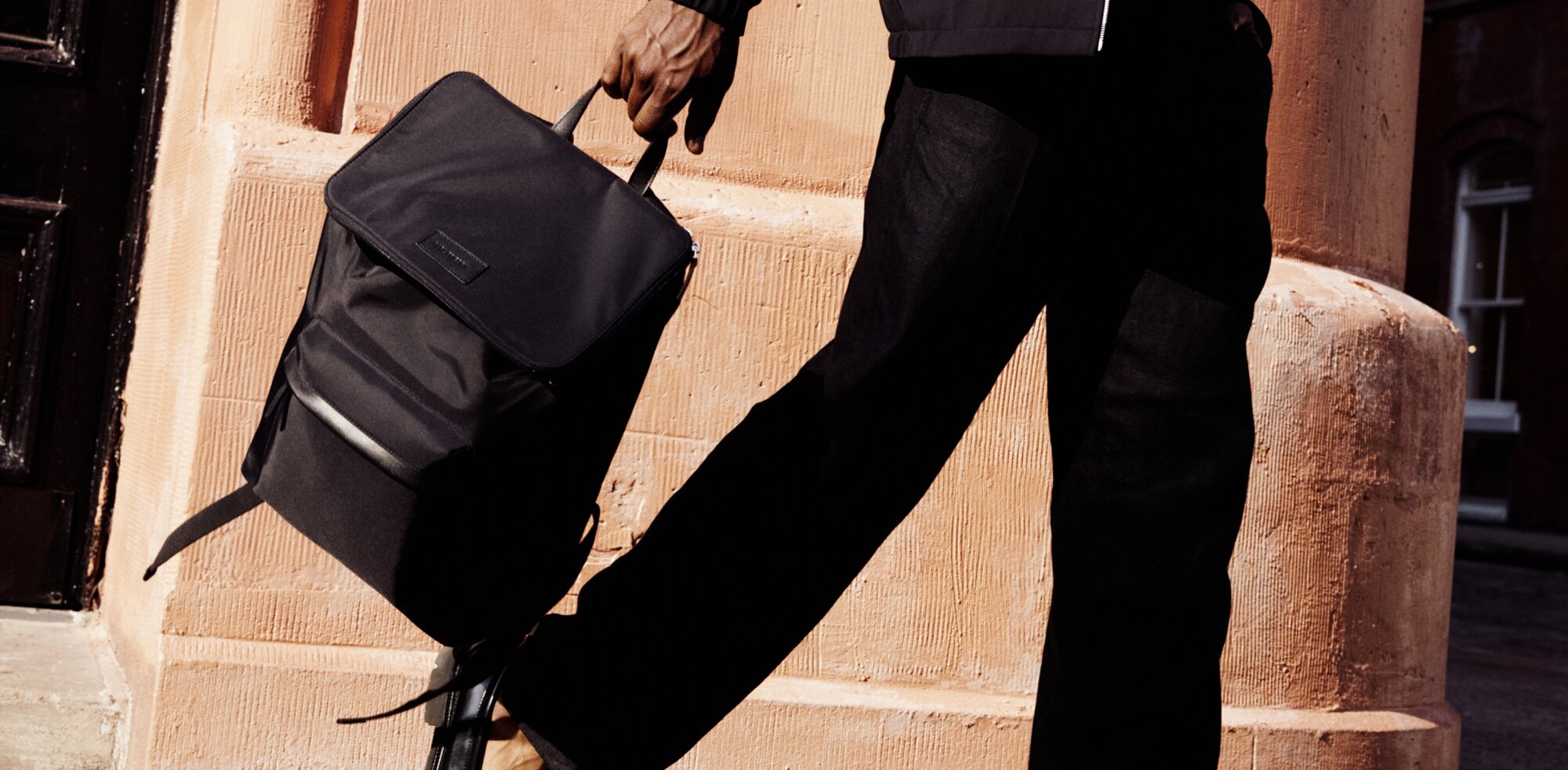But is a backpack a personal item? Or will your airline classify it as carry-on or checked luggage? The answer hinges on several variables. The backpack's size, shape and weight dictate whether it passes the personal item litmus test. In this post, we’ll demystify complex airline regulations so you can confidently bring your backpack onboard.
Contents
What is considered a personal item on flights?
What is the personal item weight limit?
Is a backpack considered a personal item?
Regulations in the U.S. vs. Europe
How to choose the best personal item backpack
How to avoid baggage fees using a personal item backpack for flying
Before you fly: remember the backpack rule

City-hopper Backpack
What is considered a personal item on flights?
The rule of thumb is that any bag you can squeeze under the seat in front of you is classified as a personal item. Whether sporting a purse, tote or laptop bag, if you can fit it under the seat, then you’re in the clear.
What is the personal item weight limit?
The personal item weight varies between carriers. Some airlines don’t bother weighing personal items, while others count their weight towards your total carry-on limit. Most airlines allow a meagre 7-10 kg (15-22 lbs) of carry-on luggage, so pack sparingly.
Is a backpack considered a personal item?
When flying, a backpack is a personal item if it’s sufficiently petite to stow under the seat. The beauty of a backpack lies in its malleability. If yours slightly exceeds the available space, you may be able to contort it until it fits.
So how small should a backpack be to slide under the seat? Most airlines have a personal item size limit of around 45 x 35 x 20 cm (18 x 14 x 8 inches), but this can vary by a few centimetres between carriers. Check the specific airline requirements if you're worried.
Regulations in the U.S. vs. Europe
The personal item ‘must-fit-under-the-seat’ rule of thumb applies on both sides of the pond. However, some airlines — especially low-cost carriers — also have strict size requirements. Budget European airlines tend to take these more seriously.
U.S. personal item regulations
U.S. airlines are typically generous by global standards. Rumours have been swirling that American carry-on/personal item size limits could soon face a major downgrade. But for now, most U.S. carriers allow 22 x 25 x 43 cm (18 x 14 x 8 inches) for personal items.
EU personal item regulations
As the birthplace of the low-cost model, European airlines are stricter about personal item weight and size restrictions than their American counterparts. Regulations vary between carriers, but expect rigorous rules and stringent enforcement. The average European personal item size limit is 40 x 30 x 15 cm (6 x 12 x 6 inches), or 102 linear centimetres (42 inches).

Traverse Backpack
How to choose the best personal item backpack
Size matters when selecting a personal item backpack for flying. Get something that fits under the seat and complies with your favourite airline’s regulations. If you don’t have a go-to carrier, consider average personal item size limits instead (see above).
But don’t fuss too much over specific digits. An extra inch rarely matters, especially when you fly full-service or can compress your backpack down to size. Most ground staff turn a blind eye to minuscule (and visually imperceivable) violations anyway.
Another consideration is weight. Not only are lighter backpacks easier to carry, but they will take up less of your carry-on weight limit. That said, heavier backpacks can offer superior durability and aesthetics — a worthy trade-off for some.
Next, think about functionality. We’ve all needed to grab essentials mid-flight. The best personal item backpacks have easy-access compartments to minimise rummaging time. Remember: you can compress malleable materials like nylon, but not rigid types of leather.
Of course, you also need a bag that aligns with your sense of style. An elegant jet-setter might look towards Ayrton Backpack, which is suitably compact, has a laptop sleeve and is made from premium grained leather.

City-hopper Backpack
How to avoid baggage fees using a personal item backpack for flying
Nobody wants to face hefty last-minute baggage fees. Here are a few simple leisure and business travel tips to avoid the dreaded gate check.
- Know the rules: Ensure your personal item fits under the seat, or you can compress it until it does. Remember to research weight restrictions, too
- Don’t overpack: Master the art of how to pack a backpack
- Wear heavy clothes onboard: If your bags surpass the carry-on weight limit, slip into your warmest and heaviest clothes when you reach the gate.
- Check-in online: You could try your luck by checking in online. While check-in staff always weigh every bag, ground staff often won’t unless the items look overweight.
Before you fly: remember the backpack rule
Like any other luggage type, a backpack classifies as a personal item provided it complies with specific airline requirements.
Regulations vary: some carriers enforce size limits, while others add the weight towards your total carry-on allowance. The American aviation industry tends to be more lenient than Europe’s, while low-cost airlines are invariably stingier than full-service carriers.
FAQ
What is the strictest size limit for a personal item?
What happens if your personal item doesn't fit?
What size backpack fits under an airplane seat?
Does a backpack count as a carry-on if it doesn’t fit under the seat?
What is the ideal size for a personal item backpack for flying?


